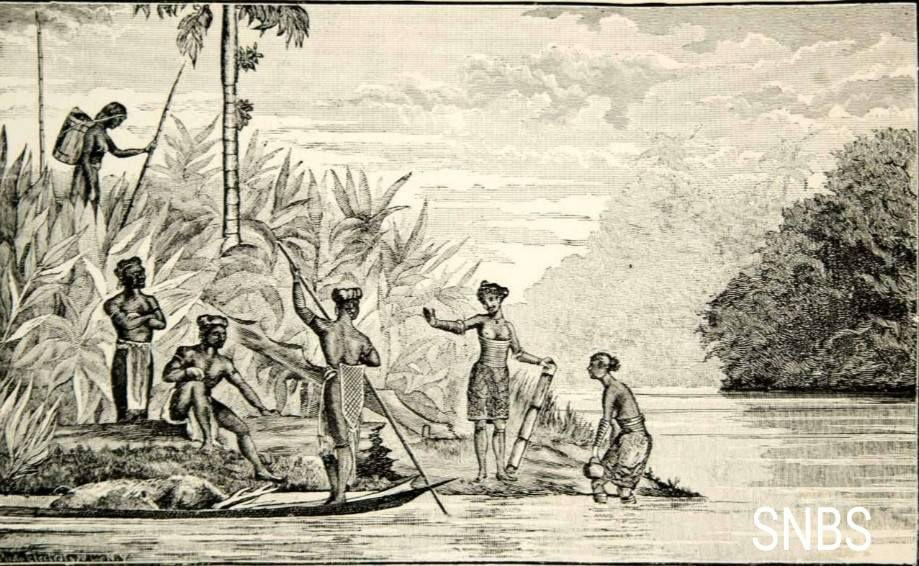EARLY HISTORY AND ORAL RECORDS OF MENGKABONG IN THE 18TH - 19TH CENTURIES
- Marwan Bin Musa
- Feb 26
- 4 min read

This is the story of a Pengiran Temenggong of the Brunei Malay Sultanate who was dashing, intelligent, strong, and extraordinarily mighty. This Pengiran Temenggong lived in ancient times along the western coast of North Borneo and was renowned for his glory, consistently achieving victory in battles and diligently safeguarding the welfare of his people. He became widely known and was honored with the title "Raja Tua Mengkabong."
According to Western historical researchers and oral traditions of the elders, there once existed a legendary, mystical, and historic settlement, famous throughout the Nusantara as a harbor for fishermen, trading ships, and a naval military base of the Brunei Sultanate. This place was called Tanjung Dallad or Dalas, known today as Mengkabong (Suang Engkabong).
During the reign of Pengiran Temenggong Raja Tua Mengkabong, the administrative territory of Sungai Tulin Mengkabong included Sungai Tulin, Sungai Kuripan, and Sungai Kerajaan, covering coastal areas of western North Borneo such as Tempasuk, Abai, Pandasan, Ambong, Sulaman, Tuaran, Tambalang, Darau, Menggatal, Inanam, Likas, Api-Api, Simbulan, Tanjung Aru, Putatan, Kinarut, Kawang, and Pengalat Papar. These territories were heavily guarded by the Bajau Samah warriors from Johor during that era, alongside other military forces of the Brunei Sultanate.
The Role of Pengiran Temenggong Sahibul Bahar Abdul Momin Amirul Faza
Pengiran Temenggong Sahibul Bahar Abdul Momin Amirul Faza, the son of Pengiran Bendahara Seri Maharaja Permaisuara Anak Ampuan Untong, a descendant of Sultan Abdul Jalilul Jabbar (the 11th Sultan of Brunei), was ordered in the late 18th century by Sultan Omar Ali Saifuddin I (the 18th Sultan of Brunei) to lead a military campaign to Menggatal. His mission was to combat the Belingingi and Illanun tribes, who were allied with Sharif Usman, the Sultanate of Sulu, and the Sultanate of Maguindanao. These tribes wreaked havoc along the western coast of North Borneo by burning villages and capturing local inhabitants to be sold as slaves in Tawi-Tawi, Jolo (Philippines), and other parts of the Nusantara.
At the same time, local nobles appointed by the Brunei Sultanate, such as Sharif Usman of Kota Marudu, sought to sever ties with Brunei and align with the Sultanate of Sulu. Historical records suggest that Sharif Usman had close ties with Pengiran Yusof, an individual linked to the Brunei royal court. Sharif Usman’s ambition was to expand his territorial influence from Kota Marudu to the southern part of North Borneo with Sulu’s support.
Responsibilities of a Pengiran Temenggong
As Pengiran Temenggong, he was responsible for leading both land and naval military forces. His powerful fleet earned him the title Raja Laut (King of the Sea). He organized and trained the Bruneian military for warfare against enemies of the state. Additionally, he oversaw commerce in the entire Brunei Sultanate and throughout the Nusantara with the assistance of Pengiran Syahbandar and local leaders.
His duties extended to law enforcement, executing royal decrees, arresting criminals, and administering justice. He was also responsible for Islamic governance, working alongside religious figures such as Sharifs, Ministers of Religion, Datuk Imam, SiRaja Khatib, Udana Khatib, and various other scholars. Moreover, he played a crucial role in welfare administration, ensuring the well-being of orphans and oppressed individuals.
To accomplish these tasks, Pengiran Temenggong was assisted by eight ceteria (high-ranking officials) and eight ministers, including Orang Kaya Syahbandar, Orang Kaya Setia Pahlawan, Orang Kaya Hamzah Pahlawan, Orang Kaya Amar Pahlawan, Orang Kaya Johan Pahlawan, Pateh, and Damong.
The Strength of Bajau Samah Warriors
According to Sir Hugh Low and Forrest, the Bajau Samah of Mengkabong were resilient fishermen originating from Johor in eastern Malacca Strait. Preferring coastal dwellings, they built stilt houses at river mouths. At its peak, Mengkabong alone could muster 2,000 warriors, with:
1,000 in Mengkabong
600 in Tempasuk
400 in Pandasan
The remainder in Abai, Ambong, and Sulaman
Historical accounts, including those of Spencer, describe the Bajau Samah as exceptionally loyal and united. One notable event involved a dispute between Bajau Samah crew members and sailors of another ethnic group on a trading vessel. After an altercation, a Bajau Samah sailor escaped to Mengkabong and recounted the incident. In response, the entire Mengkabong community mobilized immediately, launching an attack, burning the vessel, and seizing its cargo. When questioned about the incident, they admitted they did not know the full story but had simply followed their fellow tribesmen. This unwavering unity was both their greatest strength and their weakness.
War and Alliances with the Lotud Tribe
Mengkabong, near Tuaran, was close to Indai, a stronghold of the Lotud tribe. The Lotud were fierce warriors known for Misangod Random, a series of brutal battles where their fortress was drenched in blood. They successfully drove out the Illanun from Tuaran, forcing them to relocate to Tempasuk. The Bajau Samah and Lotud formed a blood pact, intermarrying and standing together against external threats.
Conclusion
Though he left behind many children in Brunei, Pengiran Temenggong Raja Tua Mengkabong sacrificed his personal life in service of the Brunei Sultanate. His sons and descendants carried on his fight, ensuring that Mengkabong remained a symbol of strength, unity, and resilience, defending the lands of North Borneo against all adversaries.
Permission Requested: (Samah Senorob)
Author & Editor: Kumis Kumis
Sources: Spencer St. John (1863), Henry Ling Roth/Hugh Brooke Low (1896), Tarling (1978), Pehin Jamil (1999), Prof. Ranjit Singh (2000), P.S. Shim (2007), Prof. Asbol (2011)







Comments